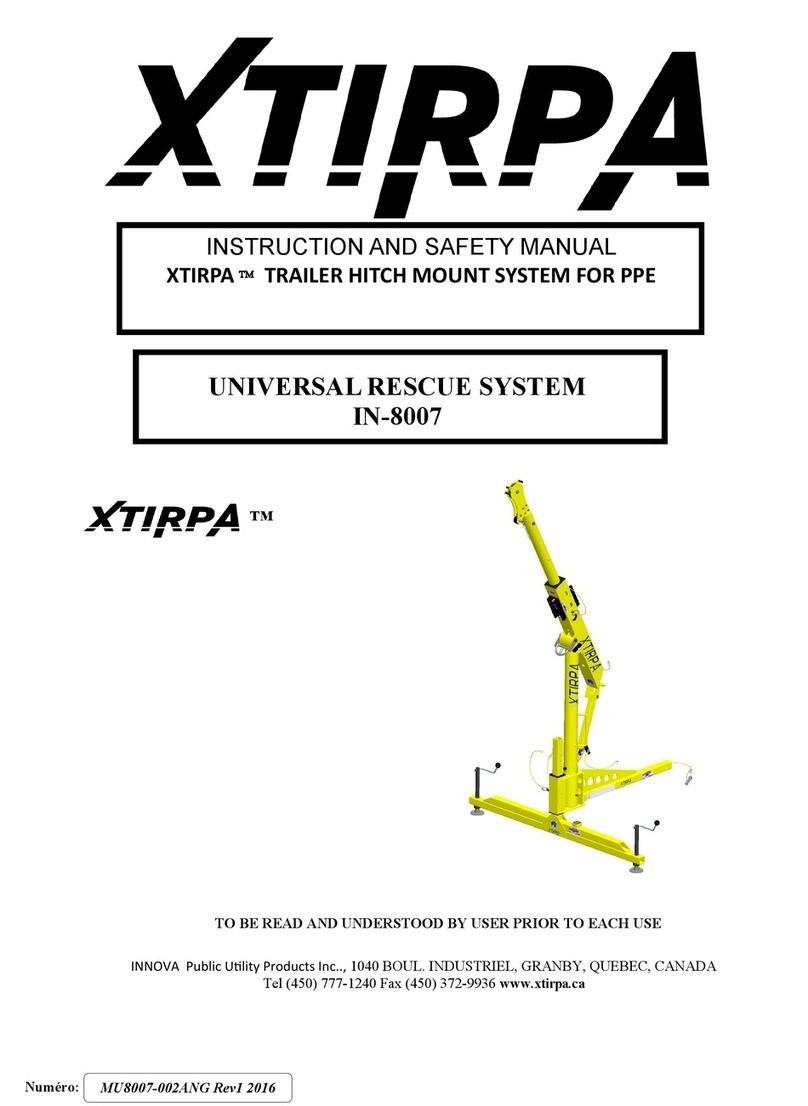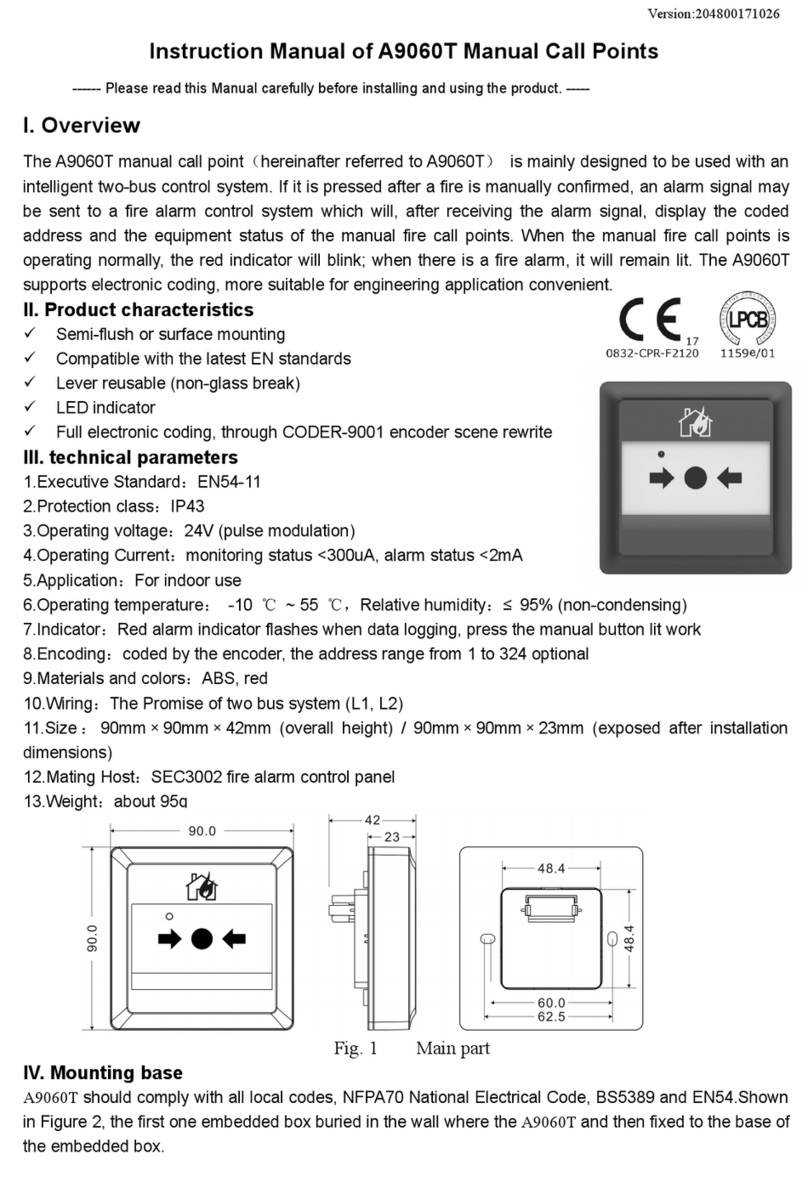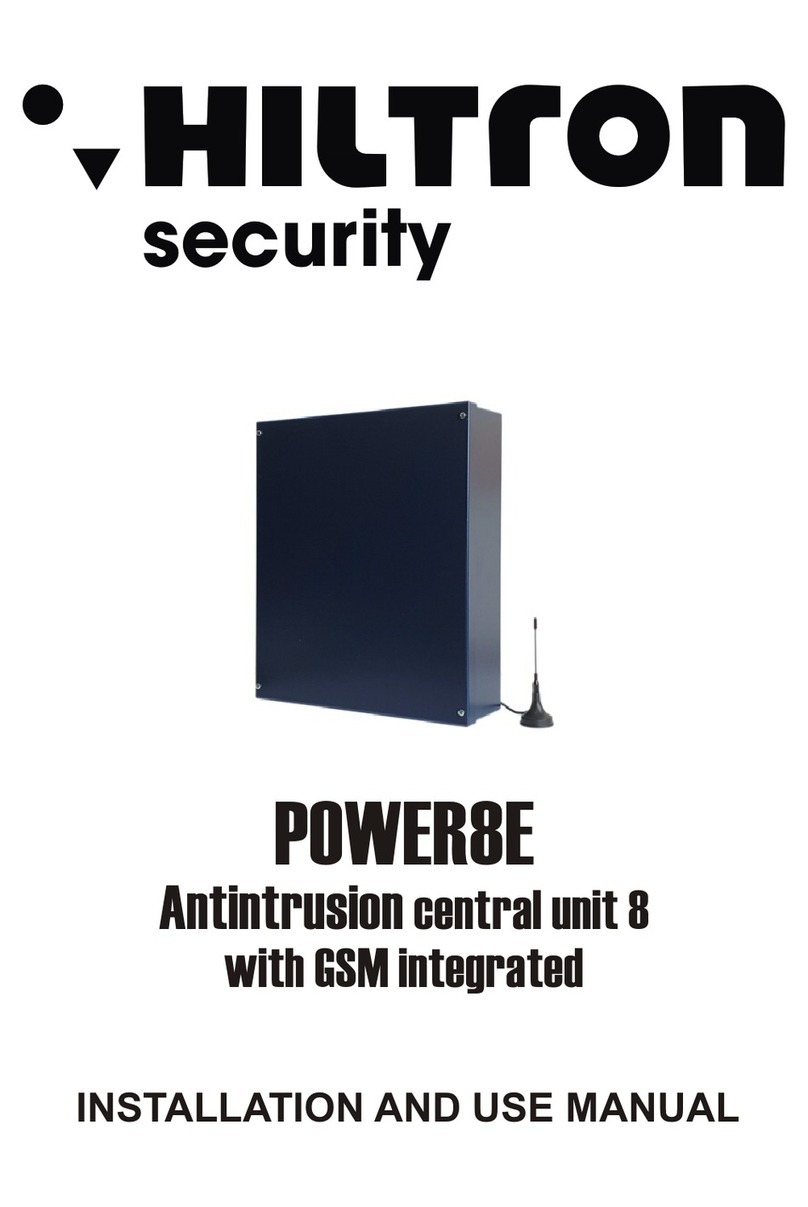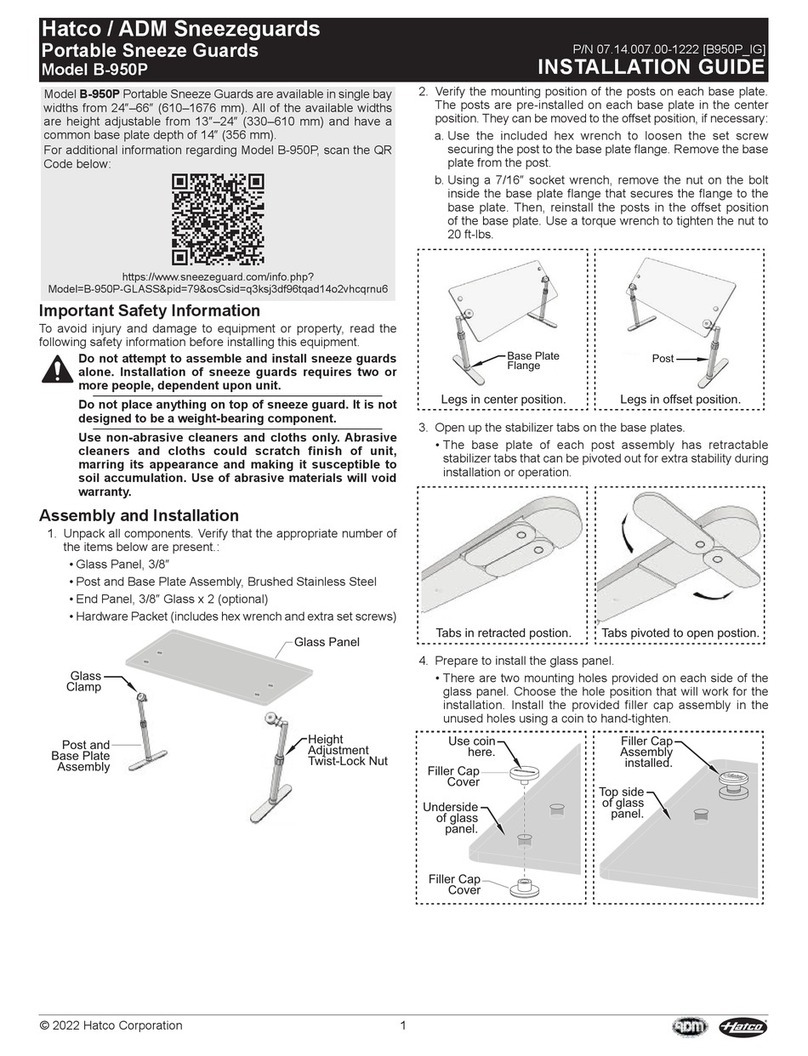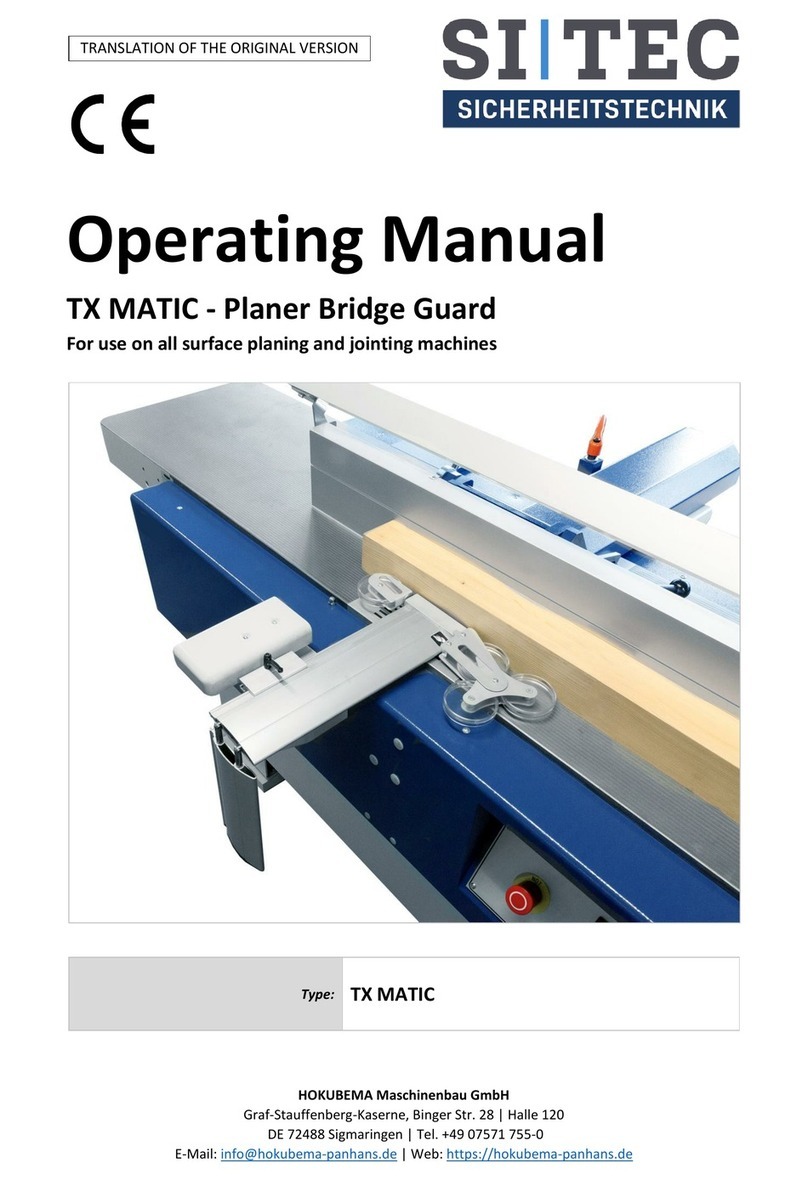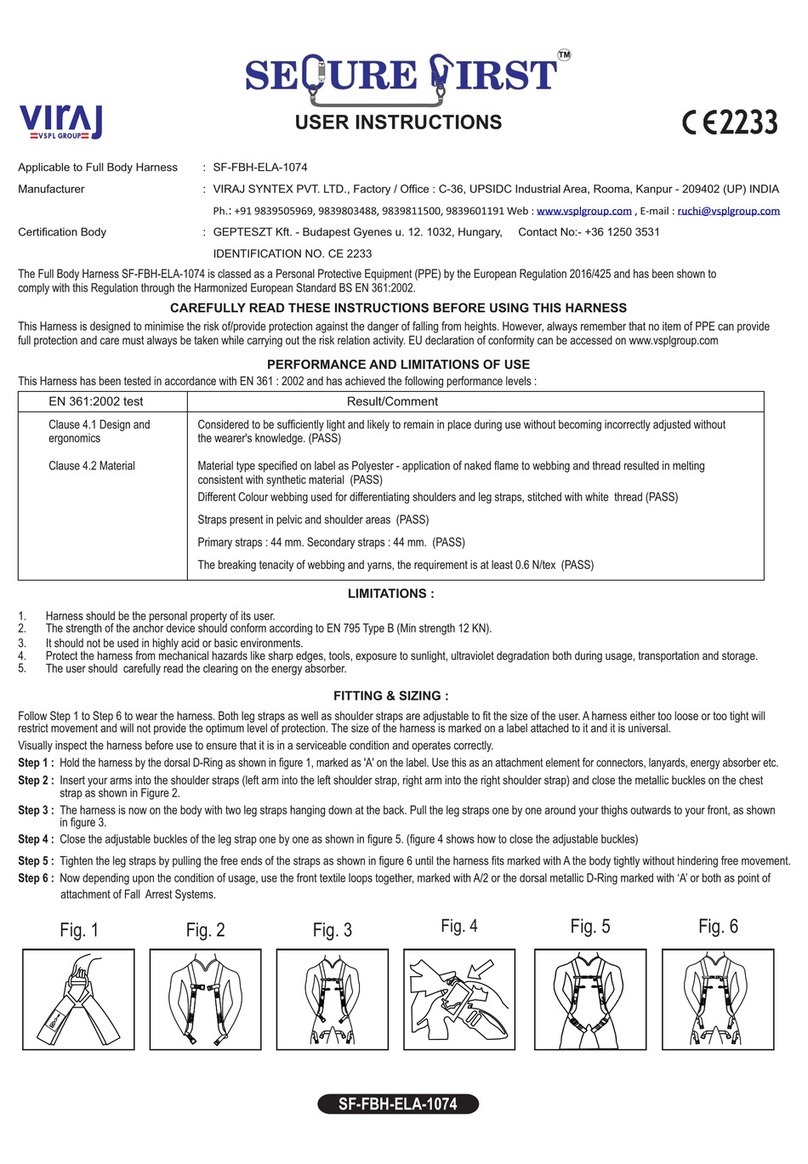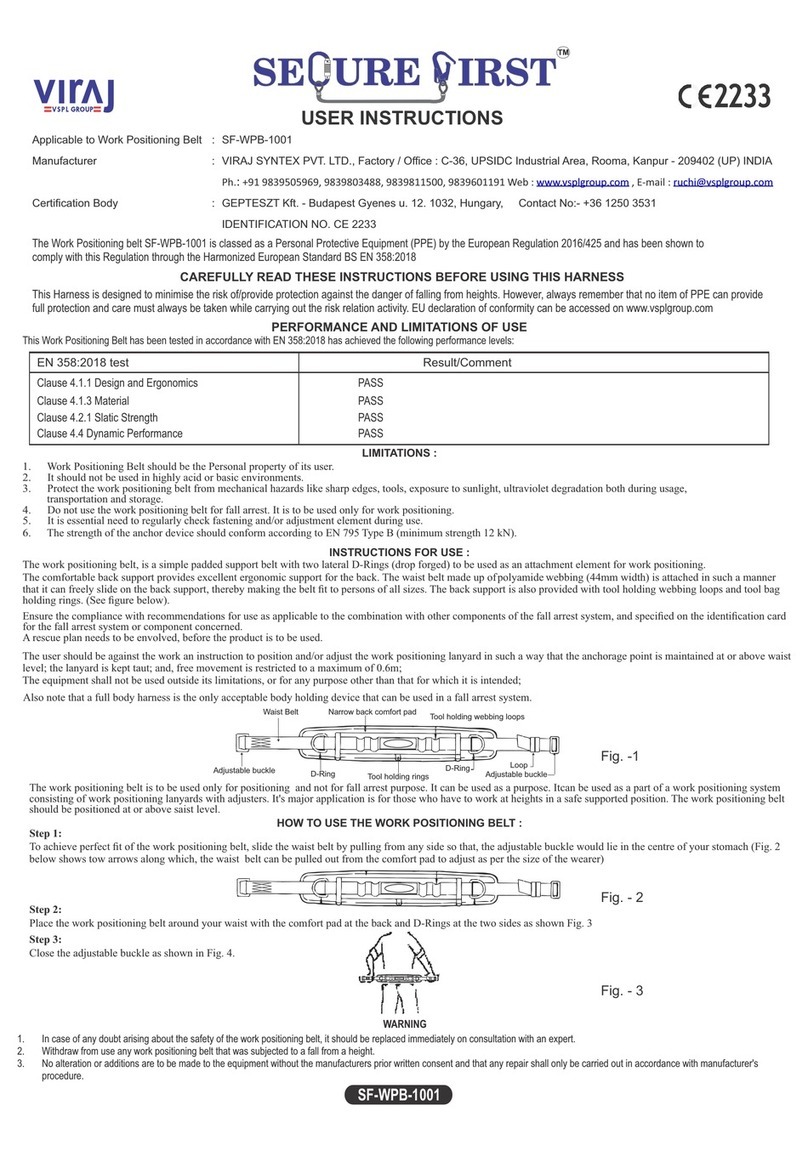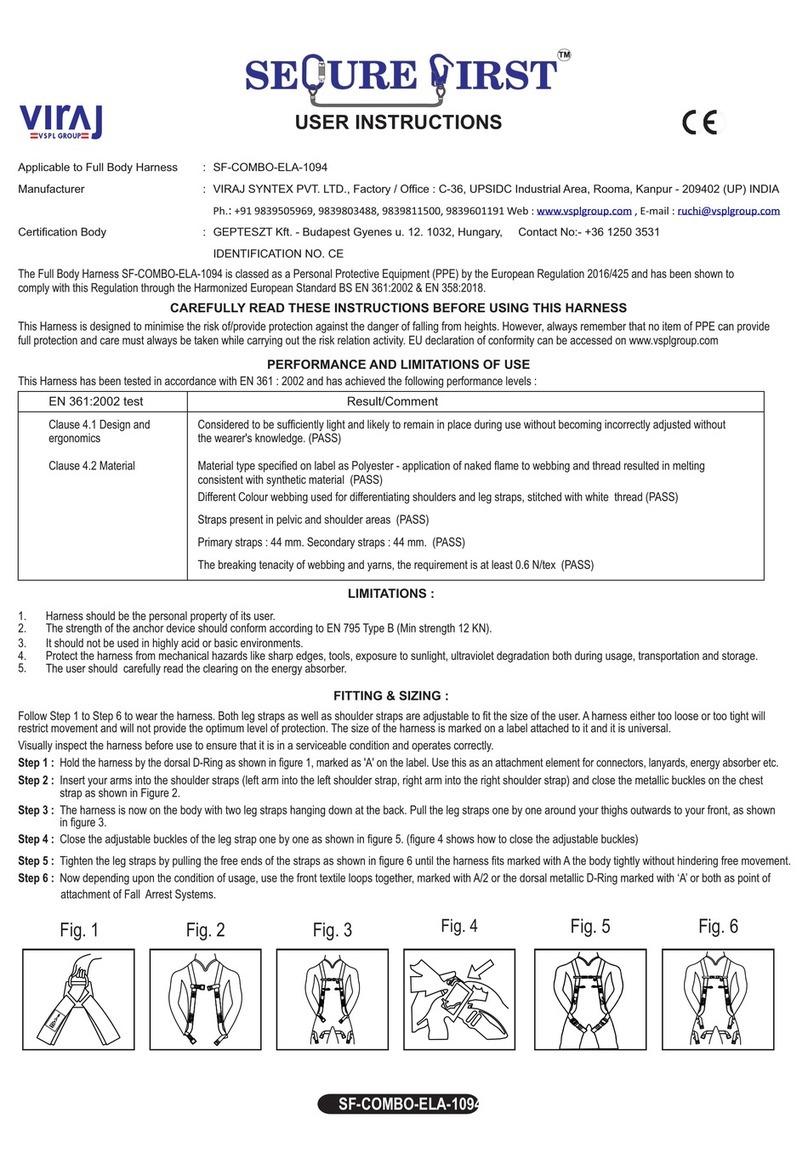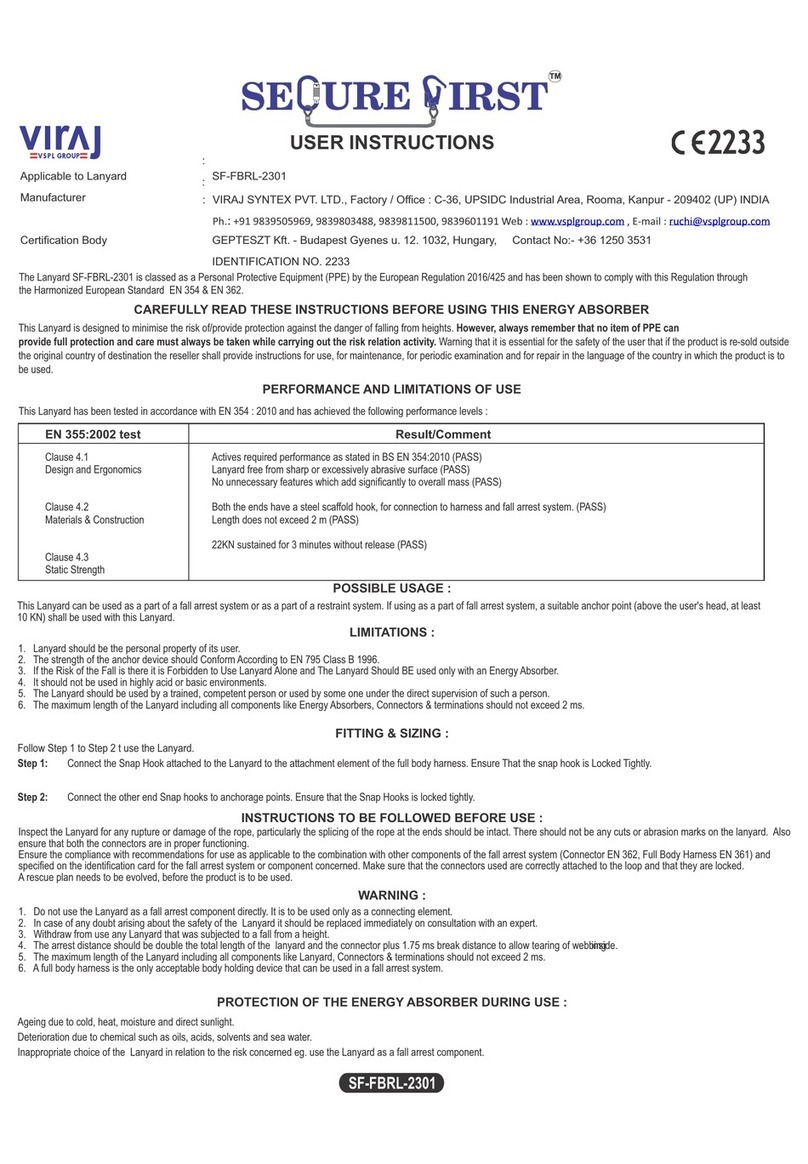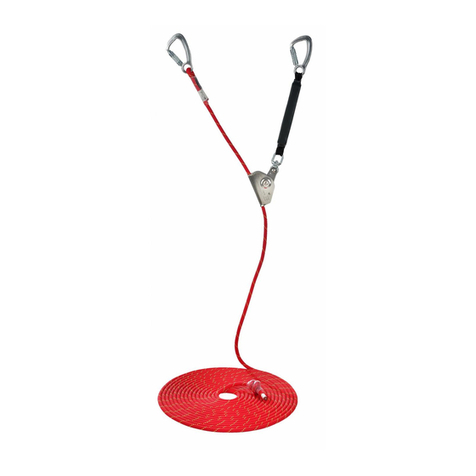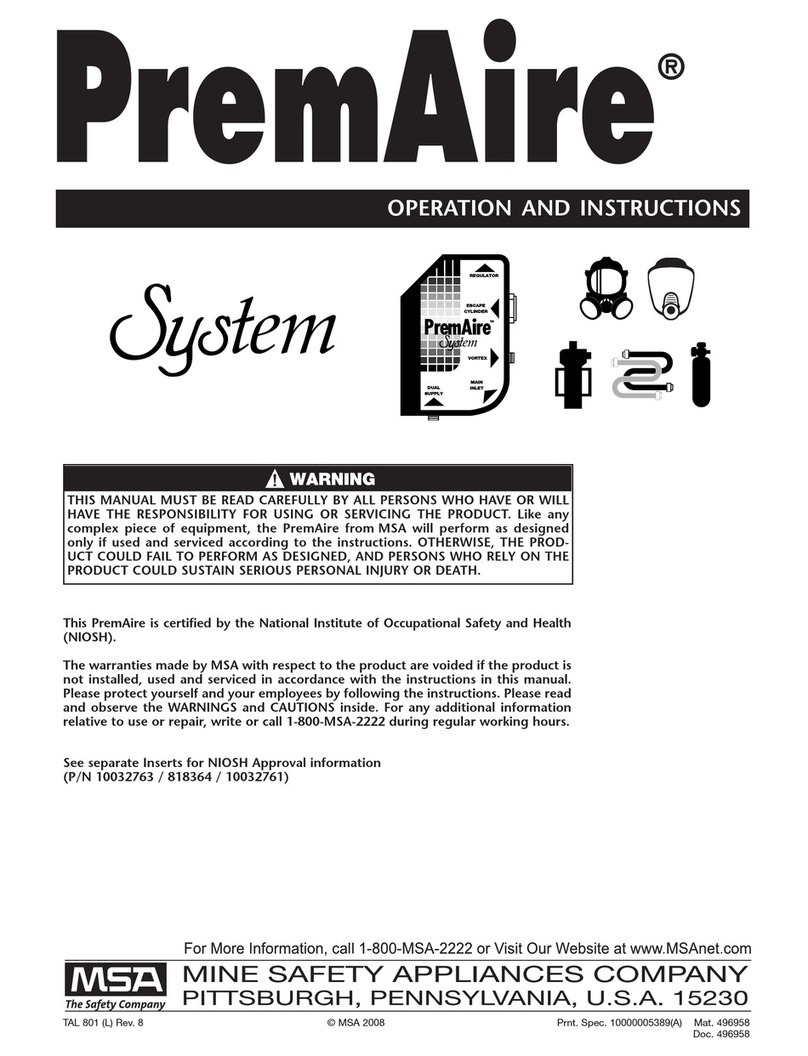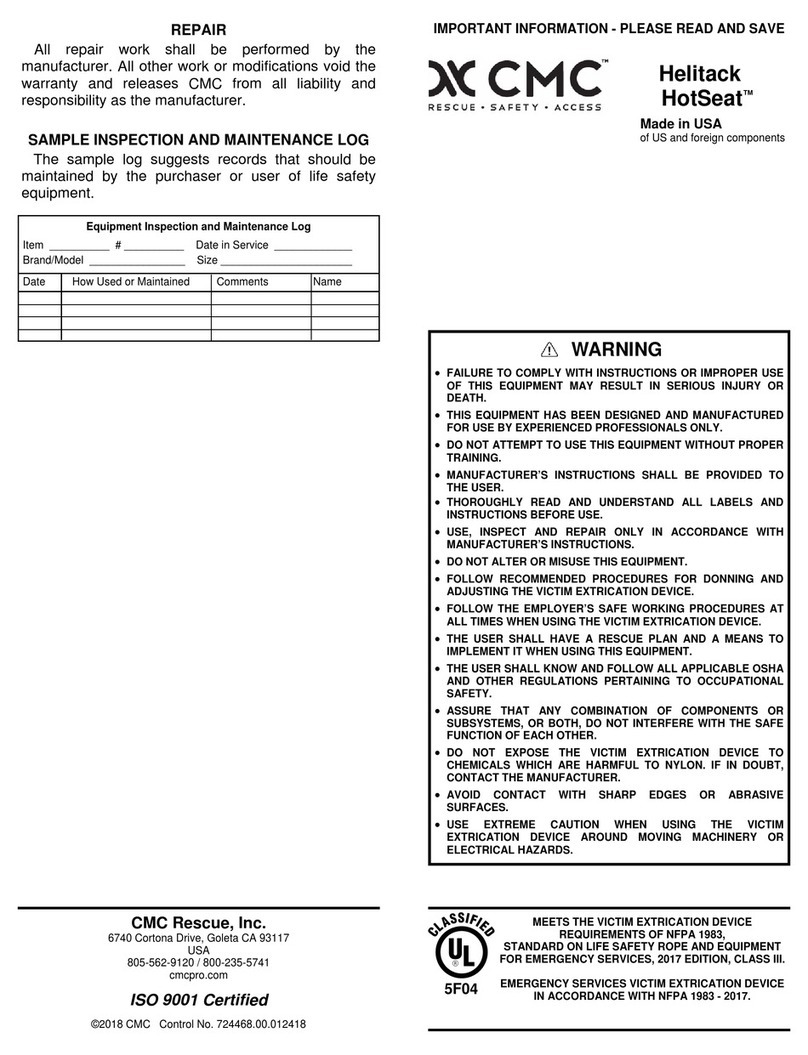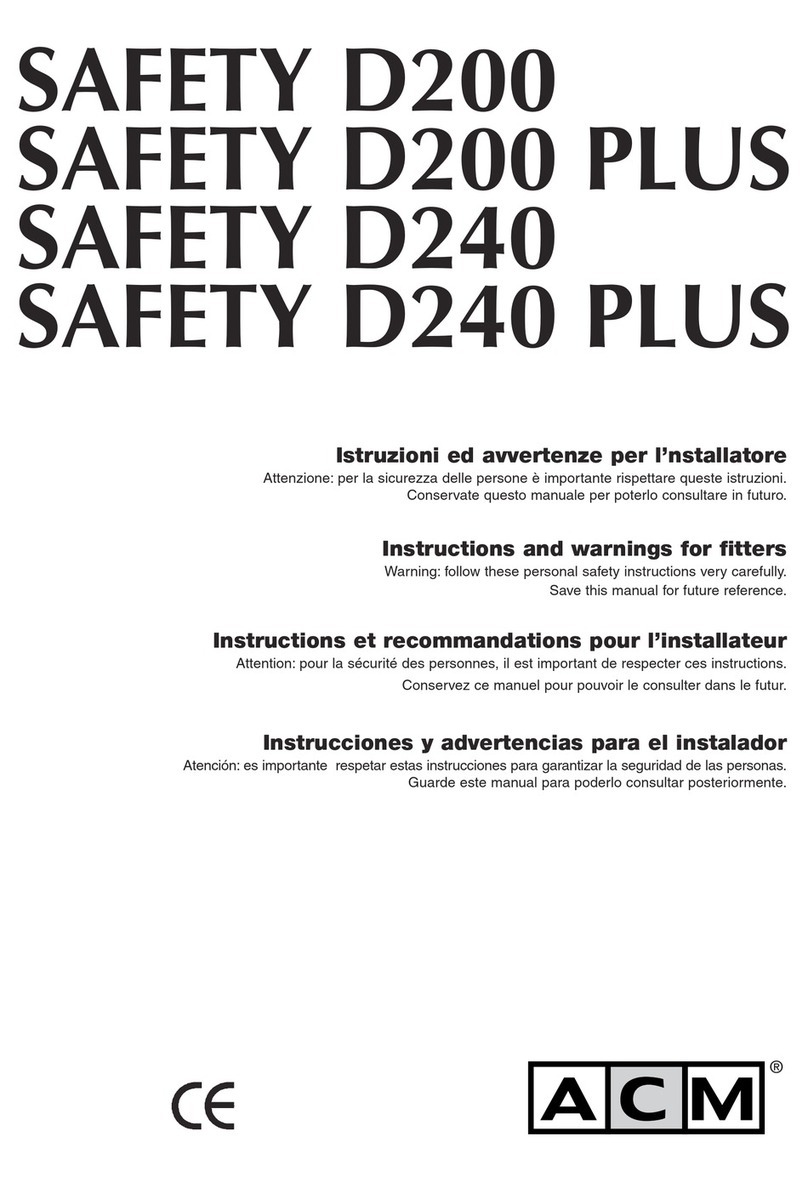
Insert retrieval block in bracket guided
by aluminum guide provided on both
side of retrieval.
Lock the anchorage eye with bracket
followed by solid pin.
lock solid pin from other end by
inserting cotter pin.
Now the retrieval block is ready to be
used on tripod.
Retrieving the User After a Fall
Once a fall has been arrested, the user will remain suspended until rescued to a safe platform or the ground. It is
important that the rescue procedure is carried out quickly after a fall.
In order to release the fall arrest brake mechanism, the suspended person must be raised, allowing the rope to retract a
little way into the retrieval. The rope can then extract from the unit, allowing the user to be rescued to a safe place.
The retrieval destination and the manner of retrieval must be determined during a pre-use assessment. The user must
not be left suspended for extended periods of time.
The retrieval mechanism may be engaged to retrieve the user. Instructions to Engage the Retrieval Mechanism are also
situated on the rear label.
1. Pull out/up and hold locking Button. Push Handle into body to engage mechanism. Align gears if necessary by
slight rotation of Handle.
2. Release locking Button. Ensure it seats within the slot.
3. Attempt to pull Handle away from the body of the unit to check gearing is locked in position.
4. Rotate Handle up half a turn to disengage Fall Arrest brake.
5. The User can now be Raised or Lowered to safety.
INSTALLATION OF RETRIEVAL BLOCK ON TRIPOD
Place the retrieval mounting bracket on the tripod leg and insert the guiding pin into the slot.
4
USE IN FALL ARREST MODE:
Make sure that the fall arrester is in fall arrest mode: the wire rope reels in and out, the handle does not rotate.
If it is not the case, pull the button located next to the rotation axis of the handle and bring the rotation axis in until t he green ring is totally
invisible (Fig. 1).
Release both the button and the axis; the green ring should remain invisible.
Attach the connector situated at the end of the wire rope to an attachment point (dorsal or sternal) of the harness (Fig. 2). The
operator can move.
Fig. 1
Fig. 2
Fig. 3





